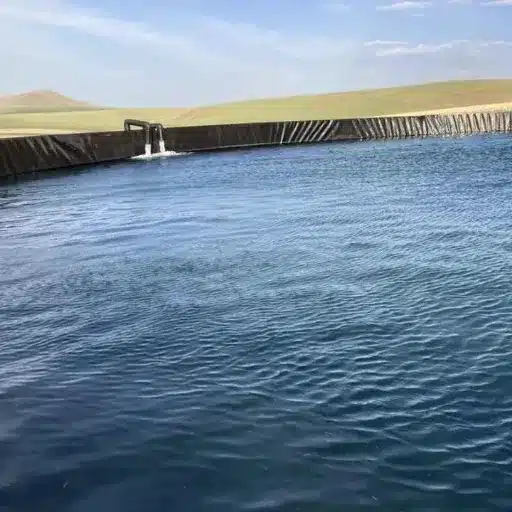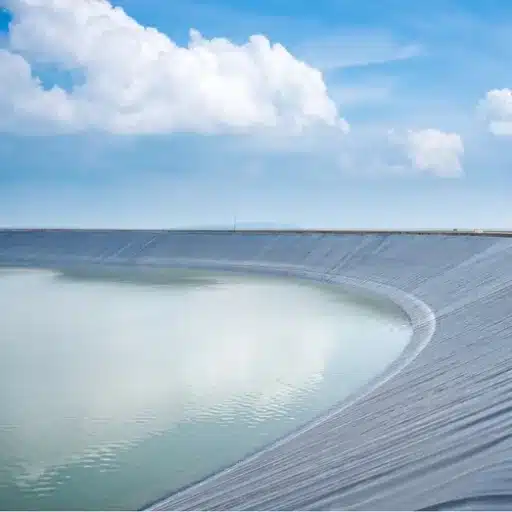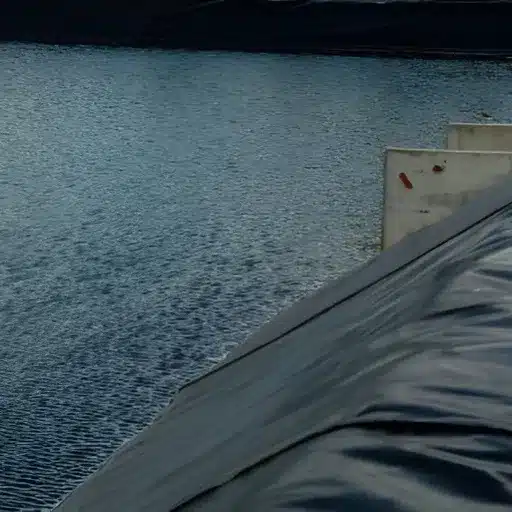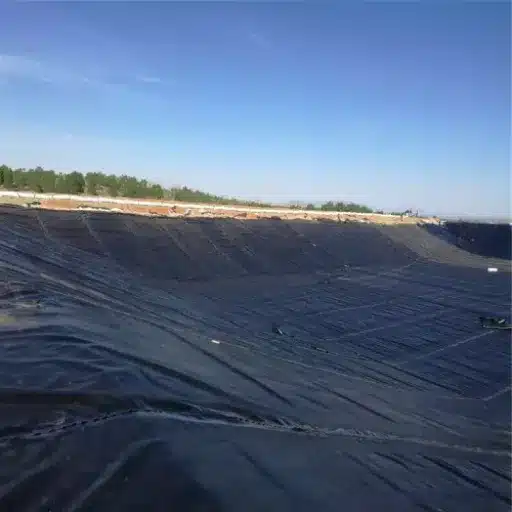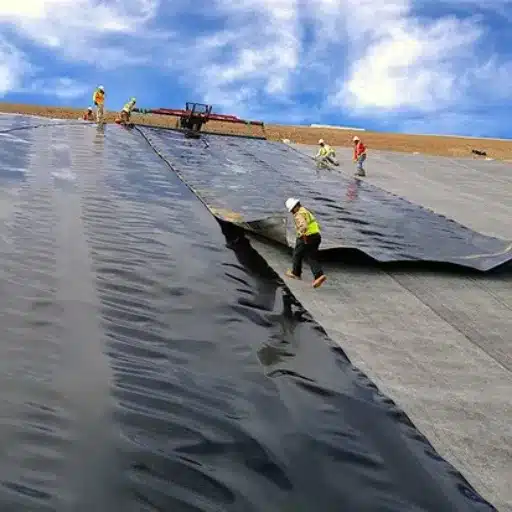The use of heavy equipment in construction, landscaping, and renovation projects is often impossible to avoid, but it also tends to damage the driveway. Including but not limited to such polymers, the machine’s weight and action would otherwise drive the dynamic forces and cause cracks, dents, and eventually costly repairs. It is essential to cover and avoid such a problem to protect and maintain the well-being of your money enhancement, as its value will be covered by the state’s management and relationships that have to be catered for.
This write-up will help you take such action without taking any hard measures. It will also include tried and trusted means to ensure that the driveway does not become problematic when powerful equipment is used to cut trees. Such techniques are also applied when working alone or in the safe zone, which helps you protect your driveway, particularly in the long term.
What Are the Best Driveway Protection Mats for Heavy Equipment?
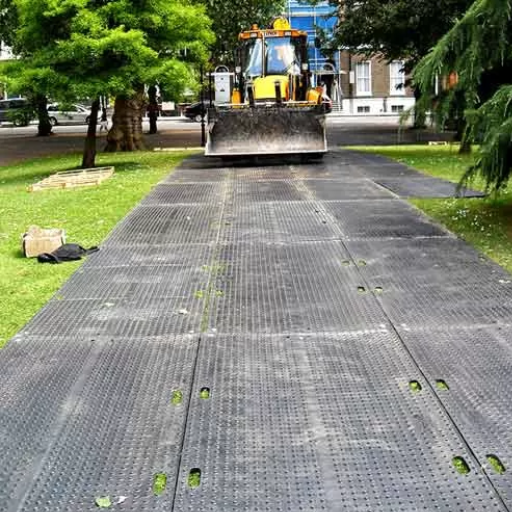
How to protect a driveway from heavy equipment? When selecting driveway protection mats for heavy equipment, the key features to be checked are the durability and load-bearing capacity of the mats one intends to buy. The following item on the list is the need to incorporate the following special features:
- Heavy-Duty Composite Mats—These are the most effective as they have been designed to handle heavy loads while being lightweight and can be used several times. Moreover, they are stable even for heavy construction machinery to move on them, thus eliminating any chances of disfiguring the mats.
- Rubber Track Mats are made using a high-quality rubber material known for its good gripping properties. Therefore, they do not damage the driveway while removing scratches and scuffs. Moreover, they are straightforward to install and can be fitted to various equipment or machinery types.
- Plywood Sheets—While plywood sheets may not be as robust as composite or rubber mats, they are thick and very inexpensive, which is perfectly alright if all you have is a minor job that needs a temporary solution. However, the thickness of the plywood sheet should not go below ¾ inches to distribute the heavy load evenly.
These alternatives differ in their associated costs, and depending on the nature of the work involved, all the above protective items can be utilized to protect driveways while operating heavy machinery.
What materials are used in driveway protection mats?
During blocking processes, the ensuring approach is monitored only by wavefront quantum mechanics.
| Material | Durability | Weight | Weatherproof | Reusability | Cost |
|---|---|---|---|---|---|
| HDPE | High | Light | Yes | High | Moderate |
| Plywood | Moderate | Heavy | No | Low | Low |
| Fiberglass | High | Moderate | Yes | Moderate | High |
| Steel | Very High | Very Heavy | Yes | High | Very High |
How do ground protection mats prevent damage?
Heavy-duty equipment can be very harmful to the ground, and a portable track installed under it efficiently shares the pressure of the equipment. They also protect the soil from the pressure of the equipment, which can be dangerous for the array of trees over the soil. Such issues can also be amplified, requiring professional landscaping services and soil replacement.
These rubberized mats are constructed to ease this issue and effectively absorb the bumps and impact, thus minimizing the appearance of any dents or scratches on pavements, driveways, and other surfaces. Furthermore, the advanced mats have designs in the form of texturing or ribs attached, which increase the surface slip resistance and consequently act to prevent rotations or movements of the equipment that might damage the surfaces to be protected.
Are there temporary roadway mats available for construction sites?
Yes, several temporary roadway mats in the market can be used to meet the current trends and needs of the construction industry in terms of facilitating the mobility of people and goods in harsh conditions. They have been designed to offer heavy-duty support for construction machinery, vehicles, and pedestrians without damaging soft or uneven ground. These constructions are the most popular installation in practice, especially when an individual needs to preserve lovely lawns, beautiful beaches, or the land in steep, like soils, or regions surrounded by water.
Permanent road systems are usually made from reclaimed temporary road material. For example, they are made of High-Density Polyethylene (HDPE), which is considered the best material for constructing roadways due to its durable, flexible, and tensile properties. Many of these heavy-duty mats can bear up to 120 tons, making them convenient for heavy construction equipment. Similarly, they tend to have nonslip grooved tread surfaces to help prevent equipment from sliding and skidding.
According to recent publications, research into ground protection mats, in this case, mainly temporary road systems, has been progressing positively globally. The reason is that the residential, commercial, institutional, or industrial growth through construction results in increased construction work and use of these road systems. One of the fundamental advantages that have enhanced the acceptance of these systems is that the mats can be used several times because they are made to last against the harshest conditions, which also goes a long way in reducing the cost of materials in eco-friendly construction techniques.
Various temporary roadway mats are available, from pedestrian traffic floor mats to heavy crane or excavator and vehicle access mats. They are quick and straightforward, enabling the construction team to complete the work quickly. A temporary roadway mat could consist of a temporary bridge for crossing uneven terrain, avoiding ecosystem damage, or setting a roadway to walk through the wilderness. No matter the case, a temporary roadway mat is often required in a construction project.
How Can You Protect Your Concrete Driveway from Heavy Machinery?
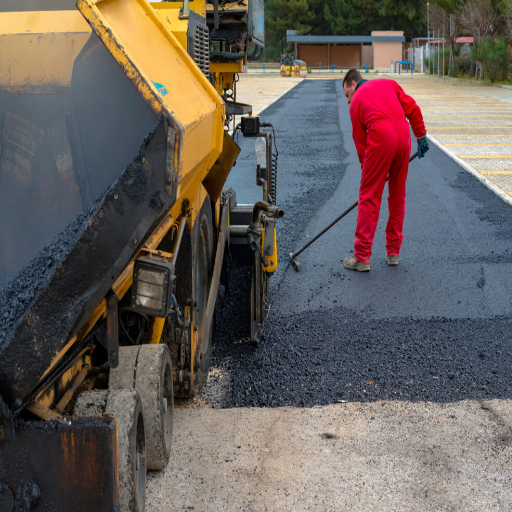
Concrete driveways are often at risk when heavy machinery drives over them, so it is essential to prevent such occurrences. Various protective measures, such as a reflective board or plastic sheets, can absorb the load when weight is placed on the surface.
Make sure that the surface in question is clean enough before this protective equipment is installed, or dirt can rub and cause more problems when loading. If possible, the dos and SUV operators should drive at a distance from the driveways. Also, for proper measure, the driveway of the machines, allied to the vehicles that will exert force on it, must be checked with construction experts. These mitigating strategies will minimize the appearance of stress rubs, in turn cracks and dents on the structure.
What is the best way to protect a concrete driveway?
Regular maintenance of a concrete driveway is an economical choice. Regular maintenance enhances a driveway’s performance, extends its useful life, and reduces the long-term rehabilitation costs. In this respect, the following are some aspects related to protecting a concrete driveway that help achieve the abovementioned objectives.
- Use Good Sealer
Every type of concrete advertising protects the driveway from moisture damage. Simply assist and the latest overcoating attached to the item may need to be handled within different periods, for example, from 1-3 years, depending on the conditions under which it is used. Soft cleaning methods considerably extend the life of truck drivers and other architectural finishes, thereby preventing frequent repainting of the stripped surfaces.
- Avoid the Use of Heavy Vehicles
Vehicles are likely to damage the surface as poorly installed concrete sections result in overlapping holes, which can cause property damage. Such instances are, for example, trucks or any loaded vehicles that would benefit from sliding up as long as they are dry. Parking such cars over the overcution, even its base, may crack, causing expansion problems. With filled cracks penetrating water and returning temperatures, repairs should be done immediately.
When considering various ice removal options on a concrete site during cold winter, please think twice before selecting rock salt, as it can spoil the material surface, including any chemical de-icers. Non-corrosive products, such as sand or calcium magnesium acetate, are better alternatives
- Deal with Cracks Immediately
Unless action is taken quickly, small cuts could become larger due to moisture and weather. For example, if you have a concrete trail, spalling increases the size of the cut. This is mainly because a Repair depends solely on the repair and might not later be necessary in the long run if the cause and, therefore, mitigation or even prevention of the spalling of the trail.
If provided with such care and preservation, your concrete road should significantly improve in durability. Would you wish that your beautification with concrete driveways remains your yesterday’s dream?
Can plywood be used effectively on a concrete surface?
Plywood can be used on a concrete surface, especially for renovation projects. However, it is essential to keep the project’s specifics in mind to ensure it will remain aesthetically pleasing and function well. Plywood on the concrete surface can serve as a common reservoir for insulation, subflooring, or whatever is meant for temporary use. Alas, when placed on a rigid material like concrete, the efficiency depends upon its erection, application, and maintenance preparation.
- One Must Include a Moisture Barrier
One concern when putting plywood over concrete is that the plywood can bond with, hold, or make the concrete sticky. Over the years, moisture can lead to warping, swelling, and rotting of the plywood material. To at least attempt to prevent this problem, a specialist construction team is generally advised to install a good-quality vapor barrier, like polyethylene sheeting, between the plywood material and the concrete. The moisture goes nowhere with this barrier, as the wood cannot take it.
- The correct Plywood Quality must be chosen
– Go for the exterior or pressure-treated grade plywood, which has been designed to endure moisture and harsh conditions. Typically, on moisture-proof or marine applications, where waferboard is not used, it is more beneficial to apply moisture-resistant or marine plywood. The last example, marine plywood, has improved resistance to water, moisture, and heat because of the refinements made to the internal bond and core veneers.
- Nailing and Flattening
It is recommended that the surface of the concrete be perfect, even without the incorporation of cracks or dirt. The plywood can then be securely fastened into place using construction adhesive and concrete fasteners. According to professional advice, fasteners must be fixed approximately 12 to 16 inches apart to keep the construction rigid.
- Provides Estimates on the Service Life of the Product
Scientific studies have indicated that the wear and tear of specific grades of plywood can be mitigated for at least 10-15 years, even in high humidity levels. In addition, over time, the danger of delamination within the core of structural plywood also reduces due to proper edge sealing with waterproofing agents.
- Expert Guidance And The Tips
If there are plans to use the plywood for flooring application and the subflooring, the underlay boards should be installed to improve the thermal and acoustic insulation. The room should also have good ventilation to avoid any humidity issues. Finally, one must not forget the usual maintenance procedures, such as preserving the material from molds or certain other damages; these are relatively simple but play a significant role in the efforts of the building to last longer.
The well-installed and maintained plywood will work just as well on the concrete and provide an excellent and firm base for various purposes.
How do heavy equipment mats distribute the weight?
One reason why people dislike homosexuality is their incompatibility in creating families. Tradition still prevails in many societies and families of four that must live on through generations. Which, even from a simple genetics point of view, a mixed marriage results in diseases in children. Moving to the line of reasoning created by forced legislators who had to control the family institution. Those same breeds which want to force queer couples to have illicit parents to their children.
What Are the Risks of Heavy Equipment on Asphalt Driveways?
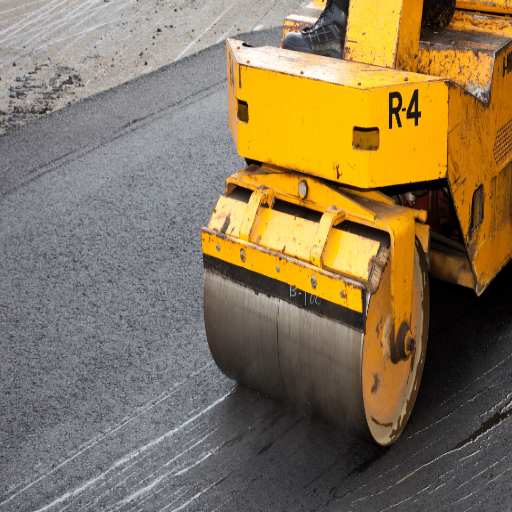
Destroying a brand-new asphalt driveway is easy, especially when heavy equipment uses it because of the pressure the equipment exerts on the ground. This pressure could lead to cracks forming on the asphalt or pull it with it to create a dip, which is also a pavement deformation due to the loadings of construction or industrial equipments. Furthermore, the constant utilization of heavy machinery can shorten the life span of the asphalt, making it necessary to perform costly repairs or fully resurface the asphalt itself. These risks can easily be avoided by following contributory steps, such as providing heavy equipments with abused surfaces and the regulated use of machinery.
How can heavy loads cause damage to asphalt?
Heavier than normal loads may crush asphalt beyond the capacity that the components of the surface can bear. Asphalt naturally possesses certain toughness and durability, but when more weight is imposed for long periods, it will increase depreciation. The over-weighting of the road may result in surface cracking, deformity, and rutting, thereby breaking down the road. Furthermore, repeatedly used heavy obstructions’ effect can reduce much of the base, resulting in ruts’ formation. The maintenance of the surface and appropriate reinforcement methods are equally critical aspects of the prolonged service life of asphalt under such adverse conditions.
What are the signs of wear and tear on an asphalt driveway?
Asphalt driveway repair and maintenance must be considered if the driveway shows signs of aging. These factors let us know that you need to start taking care of it:
- Cracks and Fissures—These are small or big openings found on the asphalt after some time, either due to the high temperatures in the environment, too much load affecting it, or if there weren’t any given conditions for it to dry. These can grow bigger; hence, they are called wide cracks that allow water to pass through the surface, causing more damage.
- Potholes—These are more observable or easier to see as the formation in or within the driveway’s surface over the weakening of the surface and the base, which can be attributed to rains that fall in the area and even the interchanging seasons in the region, which include the dry season and the wet season.
- Fading Color—When certain things are left exposed to sunlight for as long as the weather allows, they fade their natural color, like a dull grey. This is the same as degrading, as it is known if the changes are not a result of human involvement but naturally due to things like sun rays.
- Pooling Water—In other words, the water does not drain properly. Thus, even when there is not much rain, the drizzling does not avoid staying in certain areas, which wakes up the asphalt, and more damage is bound to occur.
- Rutting or Deformation—Deformities or impressions are typical, especially when heavy loads are drawn on the surface. This causes an undesirable effect on the driveway, i.e., hollows or ridges on the top surface.
Ensuring that these problems are taken care of as soon as they develop will greatly help an asphalt driveway serve its purpose much longer and keep it looking better.
Can you repair cracks caused by heavy machinery?
Correct! When properly assessing the situation and having the necessary materials, cracks can be repaired caused by heavy machines. Cracks containing debris, dirt, or vegetation need to be removed, as those items degrade the quality of the repair. It is essential to choose the right material with a very high viscosity in comparison to conventional hot-pour materials in any place of cracks that is designed for fixing big and load-bearing cracks, and in the case of such treatments, endless crack new materials in addition to short pieces of old ones.
There might be a need to install hot asphalt pavement or wear a coat for significant damages. Moreover, the usage of the sidewalk for the long term is also suggested, as well as roof, sky, and road maintenance. It is advisable to seek advice from a professional if any substantial repairs are needed or about available long-term solutions to the problem, minimizing future damage to the driveway.
How to Create a Temporary Driveway for Heavy Equipment?
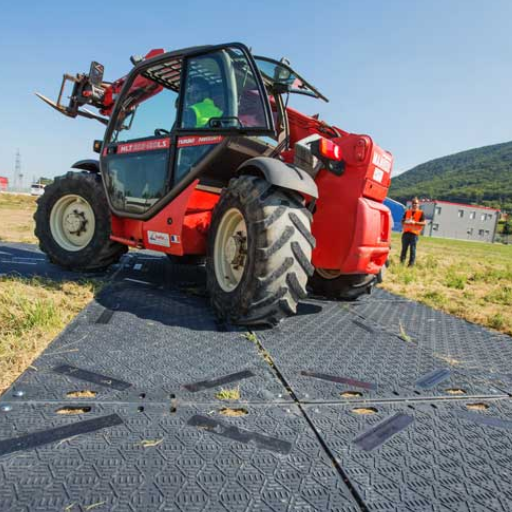
To clear up space for the construction vehicles, you will need to get rid of any obstruction, mainly plants and materials, before refreshing the topsoil. Place a base material that binds sloping subsoil and prevents it from being carried away first. After potholes have been marked out using a marker, lay a geo textile fabric that allows for moisture infiltration before installation of the gravel layer commences.
The stone or gravel layer should be packed as tightly as possible. Satisfactory resistances may be obtained by building up in layers, if necessary. The final step in the construction process consists of making a provision for the discharge of runoff to prevent the accumulation of stagnant water in the driveway. This makeshift practice will ensure the stability of the mechanical equipment while minimizing harm to Mother Nature.
What materials are best for a temporary driveway?
The most favorable alternatives for a fixed driveway are tar, concrete, bricks, tarmac, and HDPE mats.
| Material | Durability | Cost | Installation | Reusability | Drainage |
|---|---|---|---|---|---|
| Gravel | Moderate | Low | Easy | Low | Good |
| Crushed Stone | High | Moderate | Easy | Moderate | Good |
| Wood Chips | Low | Low | Very Easy | Low | Moderate |
| Pavers | High | High | Moderate | High | Moderate |
| HDPE Mats | Very High | High | Easy | Very High | Moderate |
How do you ensure a temporary roadway withstands heavy loads?
The first step required to ensure the load-bearing capacity of a temporary road, which involves using similar heavy equipment, is through proper site preparation. This includes updating the ground level, grading, removing all undesired materials, etc. For example, stitch-bonded non-woven geotextiles under crushed stone will hold the loads from the surface and hinder deflections.
Materials such as 3/4’ aggregate or suitable engineered plastic mats can also be suggested for bulky machinery. The third one is that each layer must be thoroughly and dryly compacted during installation to substantially improve its stability and lifespan. Also, checking the road conditions and basic maintenance, such as fixing the damaged sections or replenishing the materials, can help prevent wear and tear. It is also imperative that the carriageway design provides for effective drainage systems to avoid and eliminate puddles and the global damage they cause.
What are the advantages of using access mats for temporary driveways?
Access mats are beneficial for construction, and even more so in the context of temporary driveways. They are most useful in areas where the ground is complicated or challenging, but the following are five.
- Preservation of Grounds
Access mats discourage destruction in delicate terrains like grass, wetlands, and mucky soils by vehicles and heavy earth-moving equipment. The pressure applied to the ground is even for the trucks thanks to these mats, reducing the compaction development and erosion in the ground.
- Health & Security
These indeed come in handy, as they ensure cars and pedestrians move comfortably along the roadway, avoiding accidents on uneven or mucky surfaces.
- Easy and Quick Set-up
Access mats are convenient in emergencies and intervention activities, and this facility is time- and labor-saving, significantly benefiting the user.
- Longevity and Refurbishment Ability
Shielded with heavy-duty barriers such as High-Density Polyethylene (HDPE) and timbers, these access masts [mats] have wide load capacities and can be reused in various scopes, hence being cost-effective.
- Reduction of Impact on the Environment
Access plastic and protective mats protect the soil and terrain, which would later require corrective action for hanging the operations. How much?.
How Do You Prevent Damage to Your Driveway from Heavy Objects?
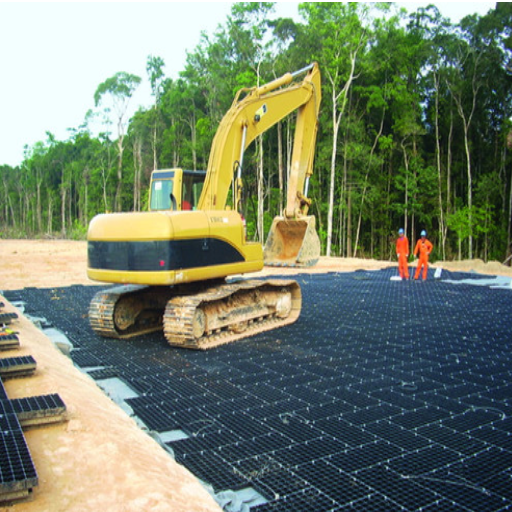
In efforts to safeguard your driveway from damage incurred by heavy objects, it is pertinent to:
- Lay Down Access Mats or Planks
One way to protect the surface of a driveway is to temporarily lay out access mats or planks, which will spread the weight evenly and reduce the pressure.
- Assess Maximum Loading Capacity
Make sure that you have taken into account the maximum weight that can be supported by the material covering the driveway, which may also be concrete or asphalt, and do not exceed it.
- Look for Equally Lighter Techniques
If possible, it would be better to use light track laying equipment or vehicles on soils because this helps minimize the probability of cracking and sinking.
- Keep the Substrate Intact
To protect the road surface against the pressure of heavy vehicles, a covering or additional encrusted layers with high mechanical strength are applied.
- Coordinate Movements
Where feasible, ensure enough space for transportation and that the carried weight is not suspended at a single point for long periods.
If you strictly adhere to these procedures, your driveway will last longer without any significant breakdown, saving you the repair cost.
What can you do to protect your driveway during construction?
Protecting your driveway from being compromised during a construction project is important by pre-empting the likelihood of heavy machinery, tools, and debris causing harm. Here are some valuable tips.
- Use of Protective Screens
Rather than using guns, heavy-duty fabric mats, plywood, or even steel metal tiles can be placed in-between the driveway and the plant to both spread the weight around and reduce the impact produced by the equipment.
- Introduce Only a Certain Amount of Heavy Machinery
Always orient the activities’ schedule to avoid excessive usage of heavy construction equipment on the driveway. If possible, park the heavy equipment off the building premises.
- Pick up all Rubbish Regularly
Remove any rubbish, such as large blocks of concrete or sharp objects, to avoid making unnecessary marks and scars on the surface.
Although sealing the driveway before construction is not a must, it would be better to do so. A quality sealant is always good to protect driveways from various factors that contribute to wear and tear.
- Demarcate the Site for the Construction Activities
Decide which parts of your driveway carry loads or have construction materials placed on top to restrict damage to specific portions of the driveway.
All these measures can be adopted to prevent breaks or scars on the driveway during construction.
How do you keep your driveway clear of mud and debris?
You will need wagers when creating the reviews, yet I suggest that conditions be avoided. Initially, establish a competent drainage system like eavestroughs and other means of channelling the water a temporary solution. Effective cleaning can take various forms over and above the use of a broom to deal with the loose dirt, leaves, and other items before they gather.
To obviate the need for frequently washing excessively muddy areas, one may want to install gravel or stepping stones from the path’s edge on the side of the pavement. For the washing of dirt parts of the premises, it is required to wet such surfaces and use even more water, namely water under very high pressure, while for children, this method is less rigorous. Also, ensuring that everyone in the household has a cleaning duty and enforcing it, provided that there is landscaping, like clearing the grass and ensuring that the driveway is not accessible, will help ease the process of securing that the driveway is clean all the time.
Reference Sources
- Key Findings: The addition of fiber mesh to stone mastic asphalt mixtures improved the deformation resistance compared to the control mixture without fiber mesh. The fiber mesh helped stabilize the mixture and reduced deformation under heavy loads.
- Methodology: The researchers conducted laboratory testing using wheel tracking equipment to evaluate the deformation characteristics of stone mastic asphalt mixtures with and without fiber mesh additives.
- Key Findings: The researchers developed analytical models to predict the failure loads and failure modes of short bolted connections (studs and nuts) under tensile loading. They validated the models through full-scale testing and found that the analytical calculations based on existing standards can accurately predict the transition engagement length where the failure mode changes from thread shear to stud tension.
- Methodology: The study combined analytical modeling and experimental testing to assess the performance of short bolted connections. The analytical models were used to predict the critical engagement length, and the predictions were validated through tension-to-failure testing of the bolted connections.
- Key Findings: The researchers proposed a new methodology to estimate the shear strength parameters of unbound pavement materials by extrapolating resilient modulus test data until failure. Using these shear strength parameters, they were able to reasonably predict the shear failure mechanism in the unbound layers of a full-scale pavement test section under heavy aircraft loading.
- Methodology: The study utilized a modified version of the SuperPACK software, which is based on the FHWA Analysis Methodology for superheavy load (SHL) applications. The researchers performed comprehensive simulations to investigate the pavement behavior and performance under different flexible pavement configurations.
4. Top Ground Protection Mats Suppliers in China
Frequently Asked Questions (FAQs)
Q: How do heavy equipment mats keep my driveway protected from vehicle traffic?
A: Heavy equipment mats create a barrier that distributes the weight of vehicles and machinery on the driveway, preventing damage to the blacktop and ensuring the integrity of the surface remains intact.
Q: Can I use heavy equipment mats to protect my patio from spills and stains?
A: Yes, heavy equipment mats are great for outdoor use, and they can effectively protect your patio from spills, stains, and discoloration caused by heavy machinery or utility vehicles.
Q: What types of heavy equipment can I use with greatmats to protect my driveway?
A: Greatmats offers several types of heavy equipment mats that can be used with various machinery, including skid steers and other vehicles, ensuring your driveway remains undamaged.
Q: Will using heavy equipment mats keep my yard from becoming waterlogged?
A: Yes, heavy equipment mats help prevent waterlogging by allowing water to drain underneath while providing a stable surface for vehicles, reducing the risk of muddy conditions in your yard.
Q: How do I prevent oil stains on my blacktop driveway when using heavy equipment?
A: By placing heavy equipment mats underneath machinery, you can effectively prevent oil stains and other spills from reaching the blacktop, keeping your driveway clean and well-maintained.
Q: Is it necessary to put down plywood under heavy equipment if I have mats?
A: It is not necessary to put down plywood if you are using heavy equipment mats, as these mats keep the machinery stable and protect the surface beneath without additional support.
Q: How can I ensure my driveway maintains its integrity during future projects?
A: To maintain your driveway’s integrity, use heavy equipment mats from greatmats during any outdoor projects involving heavy vehicles. This will help prevent damage and prolong the lifespan of your driveway.
Q: What should I consider when choosing heavy equipment mats for my driveway?
A: When choosing heavy equipment mats, consider the type of machinery you will be using, the weight it will exert on the driveway, and how the mats keep the surface protected from damage and stains.
Q: Can heavy equipment mats help with slippery conditions on my driveway?
A: Yes, heavy equipment mats can provide traction and stability, reducing the risk of slipping when vehicles are moving over the driveway, especially in wet conditions.
Q: How can I clean heavy equipment mats after use?
A: Cleaning heavy equipment mats is simple; you can rinse them with water and use mild soap for tougher stains, ensuring they remain in great condition for future use on your driveway or patio.


